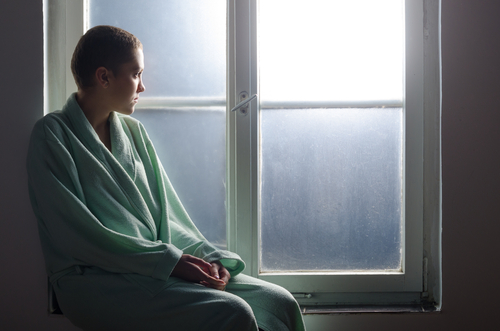Six years ago, Betty Moren received devastating news – she had been diagnosed with lung cancer and was given a prognosis of just a few months to live. However, through a combination of old and new cancer therapies, Betty has defied the odds and continues to fight her battle against cancer. Her remarkable journey serves as a testament to the advancements in medical science and the importance of perseverance in the face of adversity.
Betty’s Diagnosis

In late March 2017, Betty and her husband Bill had just moved to Colorado for Bill’s work. Then 57 years old, she experienced some back spasms that led her to an emergency room. It was in the investigation into these back spasms that a CT scan revealed a mass in her right lung that was completely unrelated to her back issues. Further tests confirmed that Betty had non-small cell lung cancer (NSCLC) that had spread to her left lung. The prognosis for Stage 4 NSCLC is typically grim, with a five-year survival rate of only 9%. Betty’s case was even more challenging as her cancer lacked genetic characteristics that could make it vulnerable to targeted therapies. The doctors gave her just months to live. (1, 2)
Read More: 6 Beverages With Anti-Cancer Properties
Chemotherapy and its Challenges

While many cancer therapies exist, chemotherapy is still considered to be one of the most effective. Betty sought treatment at UCHealth Lone Tree Medical Center, where she underwent carboplatin-pemetrexed (Alimta) chemotherapy from May through August 2017. Although the treatment resulted in significant shrinkage of the tumor in her left lung and improved her ability to breathe without supplemental oxygen, there were setbacks along the way, including hospitalizations for febrile neutropenia. At one point, she had a fever of over 106. The doctors needed to come up with new solutions in order for Betty to continue to fight her cancer.
Immunotherapy and its Limitations

Following chemotherapy, Betty transitioned to a maintenance infusion of pemetrexed. However, due to the potential risk to her kidneys outweighing the benefits, she began a new immunotherapy called nivolumab (Opdivo) in May 2018. Nivolumab provided positive results for over two years before the cancer started to show signs of resistance. Dr. Jose Pacheco, Betty’s oncologist, attempted to enhance the effectiveness of nivolumab by adding trametinib (Mekinist), but unfortunately, the combination had little effect.
Facing Additional Challenges

Betty’s journey became even more complex when she suffered a stroke in September 2020, part of a series of three strokes within a few weeks. She recalls sitting on a video call with her doctor, looking at her hand, and asking out loud “Who’s hand is that?”. Her doctor immediately yelled to Bill to call 9-1-1, as Betty was having a stroke. Doctors then discovered that these strokes were likely caused by blood clots related to her extensive cancer treatments. A congenital heart condition further increased her susceptibility to strokes. Treatment with anticoagulants helped prevent further episodes, but Betty had to undergo physical, occupational, and speech therapy to regain certain abilities that were affected by the strokes.
Discovering a New Hope

As 2021 progressed, Betty and her healthcare team realized that the trametinib-nivolumab combination was no longer effective. Seeking an alternative, Dr. Pacheco found a potential solution in an experimental drug called sacituzumab govitecan-hziy (Trodelvy). Betty began participating in a clinical trial, receiving infusions of Trodelvy every two out of every three weeks. Her care was transferred to Dr. Ross Camidge, a lung cancer specialist at the University of Colorado School of Medicine.
Read More: ‘When I Got Cancer, Everyone Brought Food. I Finally Told Them What I Really Wanted’
Trodelvy – A Promising New Therapy

Trodelvy, also known as IMMU-132, is an antibody-drug conjugate that selectively targets cancer cells. By delivering chemotherapy directly to the cancer cells while sparing healthy cells, Trodelvy aims to maximize its effectiveness while minimizing side effects.
“It’s like you figured out that the cancer lives in houses with red doors, and so you tell the FedEx chemotherapy delivery man to say, ‘Look, you just want to take this to the ones with red doors,’” Dr. Camidge said, explaining the treatment. “And, presumably, most of Betty’s cancer has red doors, and most of her normal cells don’t have a red door.”
Betty did experience a unique side effect of Trodelvy – her hair loss, which has persisted even after almost two years of treatment. This is because, as Dr. Camidge explained, her hair cells apparently also had red doors, meaning that the treatment also attacks those cells. However, this inconvenience has been outweighed by the drug’s impact on keeping her cancer in check.
Living Life to the Fullest

Thanks to the efficacy of Trodelvy, Betty has regained her independence. She no longer relies on a walker or cane and actively participates in activities such as playing bocce and engaging in book clubs and a Bible study group. Betty’s determination to make a difference also led her to launch a handmade greeting card business called Stage 4 Creations, with proceeds donated to cancer research. The cards are specific to people dealing with illnesses such as cancer, where the message Get Well Soon just doesn’t seem to hit the mark. Rather, her cards say things like “Dream”, “You’re in my thoughts today”, “Embrace the journey”, and “You’ll always be brave enough to fly”. For Betty, these words are much more comforting and powerful for someone navigating a potentially fatal illness.
The Future and Lessons Learned

Betty’s case exemplifies the ongoing advancements in cancer care and the potential for cancer treatment to resemble chronic disease management. With each passing year, new therapies and approaches emerge, offering hope for patients like Betty who keep fighting against the odds. While the future of Betty’s treatment remains uncertain, she continues to inspire others with her resilience and unwavering spirit.
“You’re kind of walking across a bridge that they haven’t finished building yet,” Camidge says. “And if the therapy or drug candidate lets you walk slow enough, they will continue to build the bridge so that your feet land safely.”
Betty Moren’s journey against lung cancer is a testament to the power of a positive mindset, the dedication of medical professionals, and the transformative impact of both old and new therapies. Her story serves as a reminder that even in the face of a devastating diagnosis, there is always hope. With ongoing research and advancements in medical science, more individuals like Betty can look forward to a brighter and more promising future in the battle against cancer.
Read More: Do Vitamin B12 Supplements Cause Acne, Bone Fractures, and Lung Cancer?
Sources
- “Six years ago, she was told she had months to live. Therapies old and new keep lung cancer patient moving forward.” UC Health. Todd Neff. November 27, 2023.
- “After Lung Cancer Clinical Trial, Betty and Bill Moren Give Back as Patient Advocates for Thoracic Oncology Research Group.” Cuanschutz. Greg Glasgow. November 2, 2023

